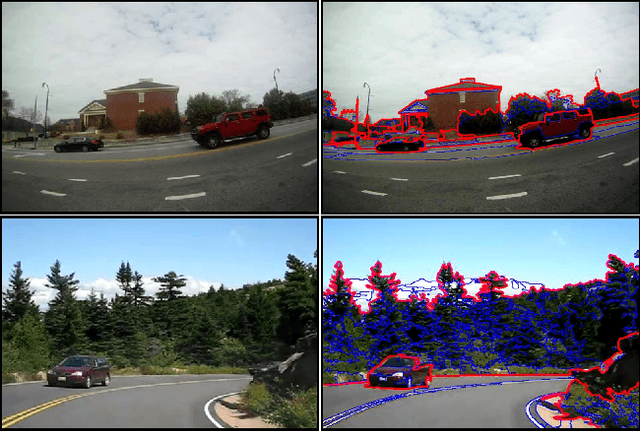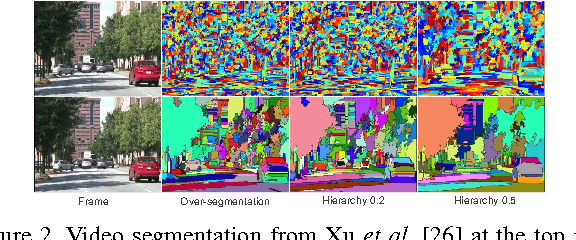Finding Temporally Consistent Occlusion Boundaries in Videos using Geometric Context
Paper and Code
Oct 25, 2015



We present an algorithm for finding temporally consistent occlusion boundaries in videos to support segmentation of dynamic scenes. We learn occlusion boundaries in a pairwise Markov random field (MRF) framework. We first estimate the probability of an spatio-temporal edge being an occlusion boundary by using appearance, flow, and geometric features. Next, we enforce occlusion boundary continuity in a MRF model by learning pairwise occlusion probabilities using a random forest. Then, we temporally smooth boundaries to remove temporal inconsistencies in occlusion boundary estimation. Our proposed framework provides an efficient approach for finding temporally consistent occlusion boundaries in video by utilizing causality, redundancy in videos, and semantic layout of the scene. We have developed a dataset with fully annotated ground-truth occlusion boundaries of over 30 videos ($5000 frames). This dataset is used to evaluate temporal occlusion boundaries and provides a much needed baseline for future studies. We perform experiments to demonstrate the role of scene layout, and temporal information for occlusion reasoning in dynamic scenes.
 Add to Chrome
Add to Chrome Add to Firefox
Add to Firefox Add to Edge
Add to Edge